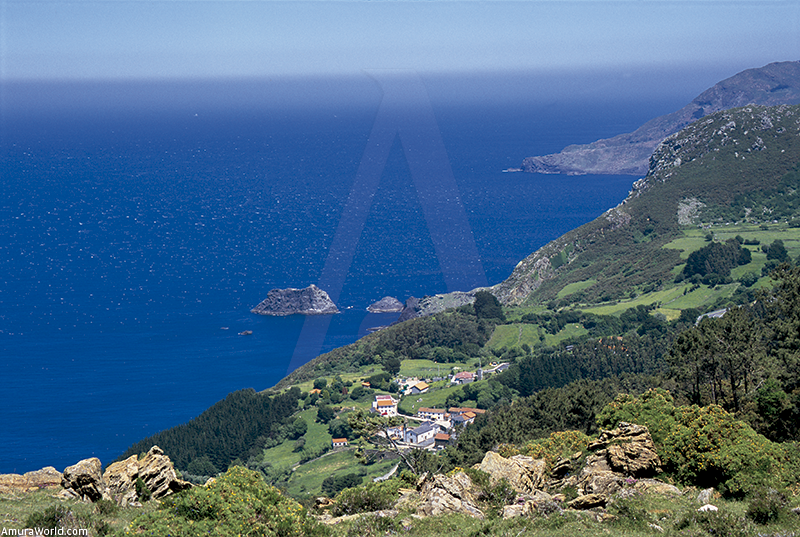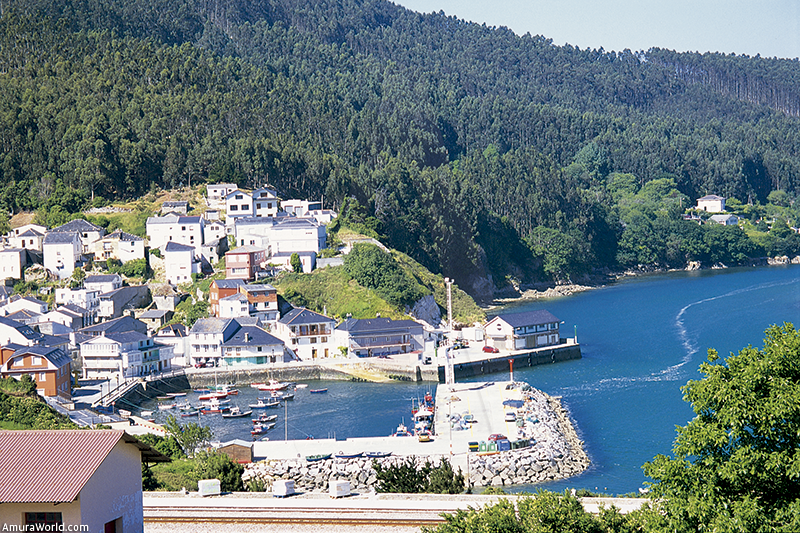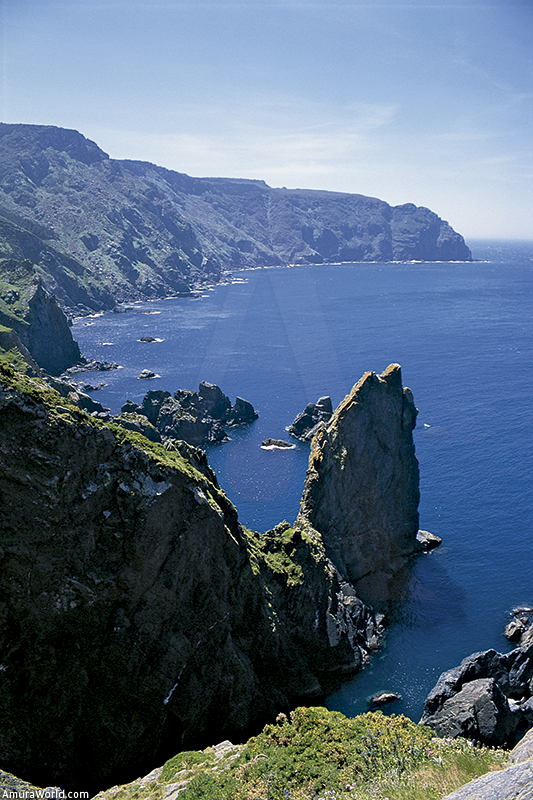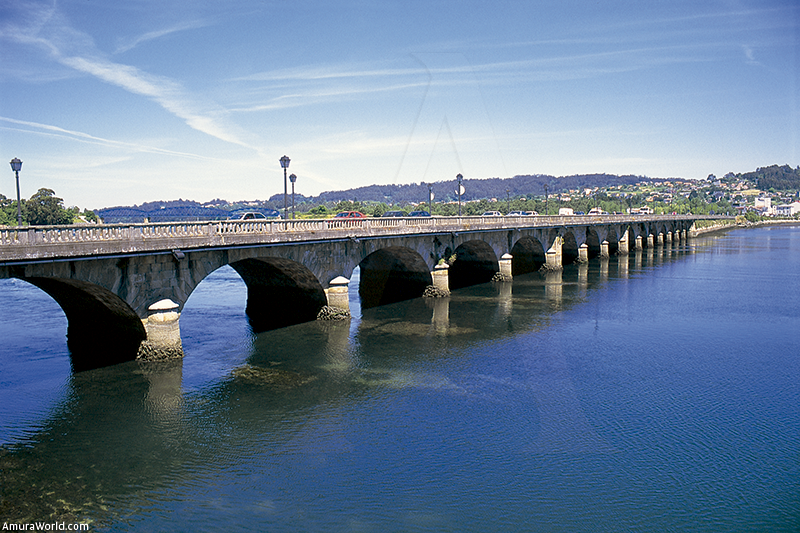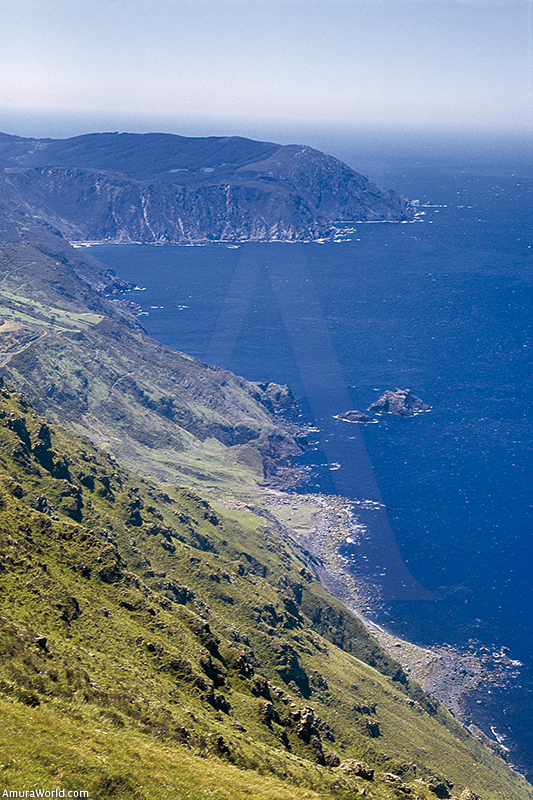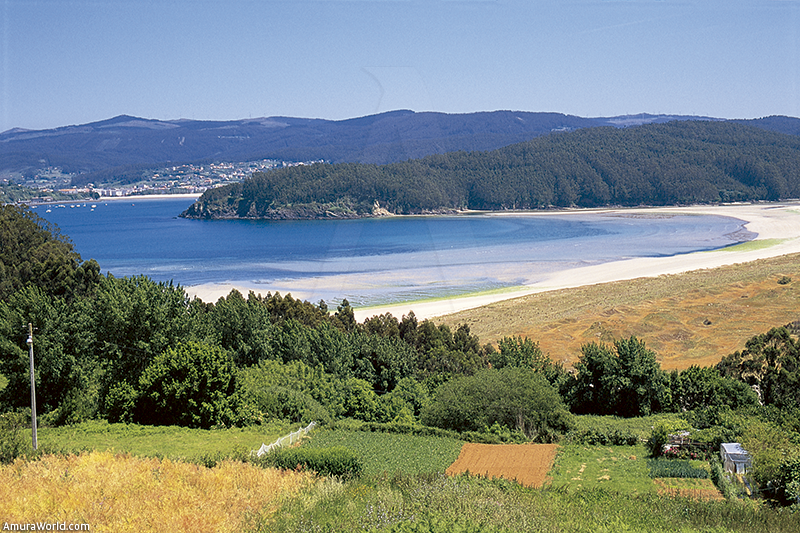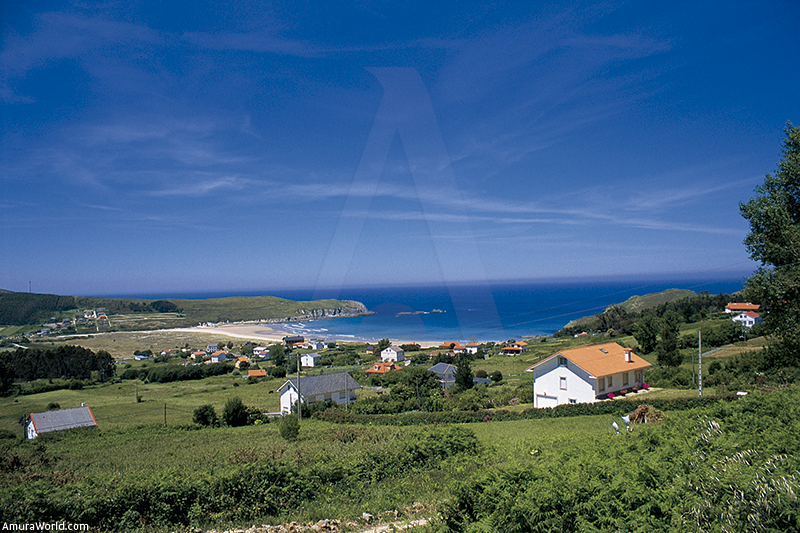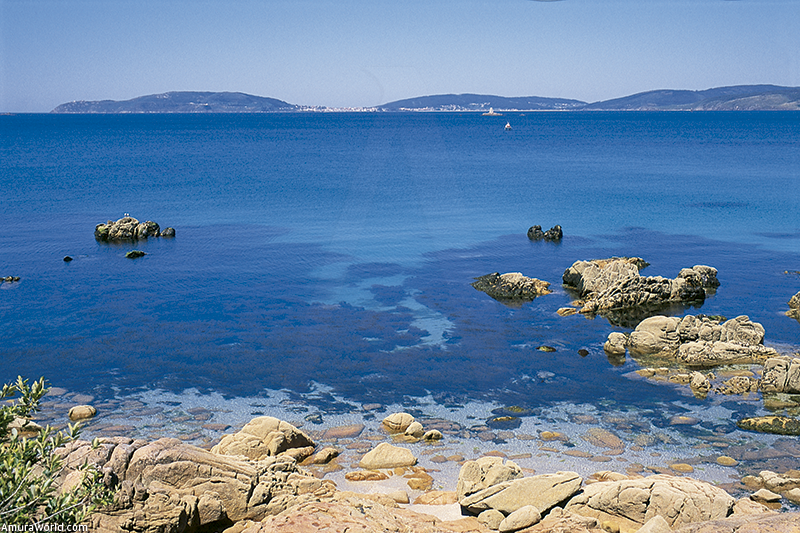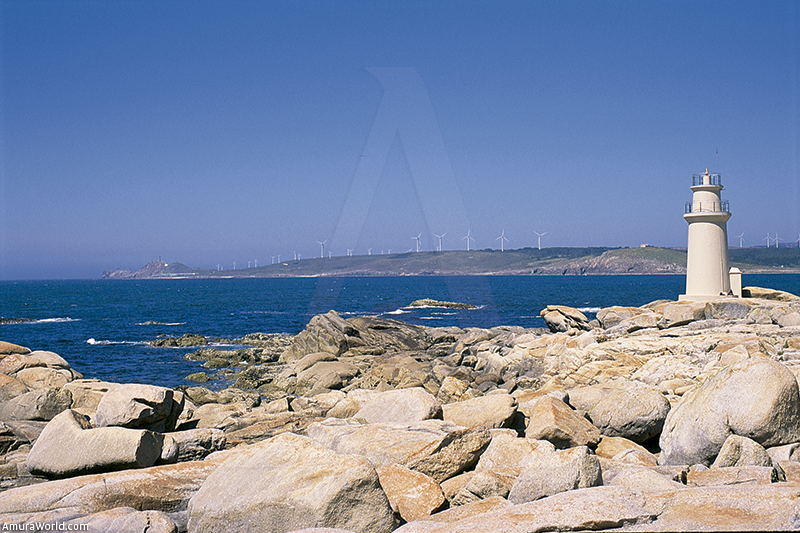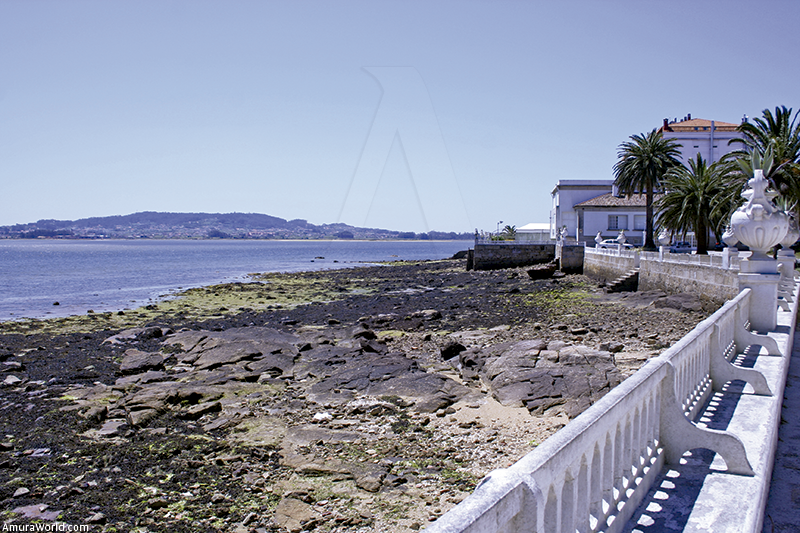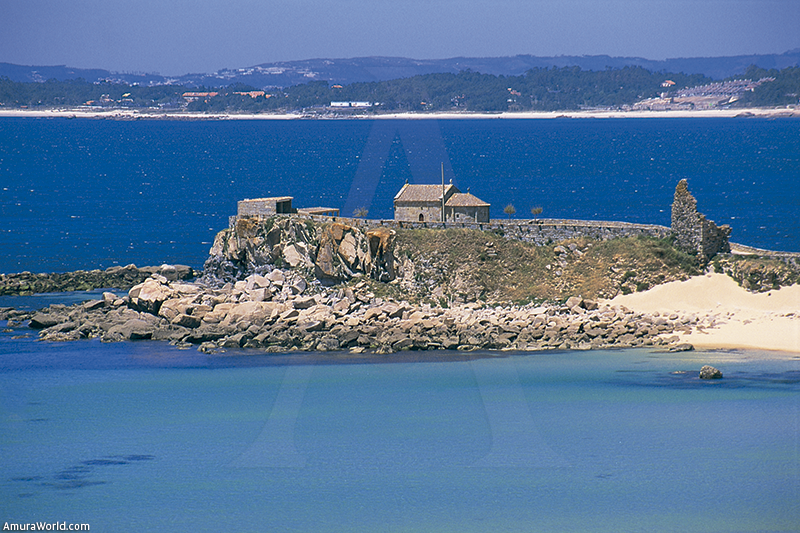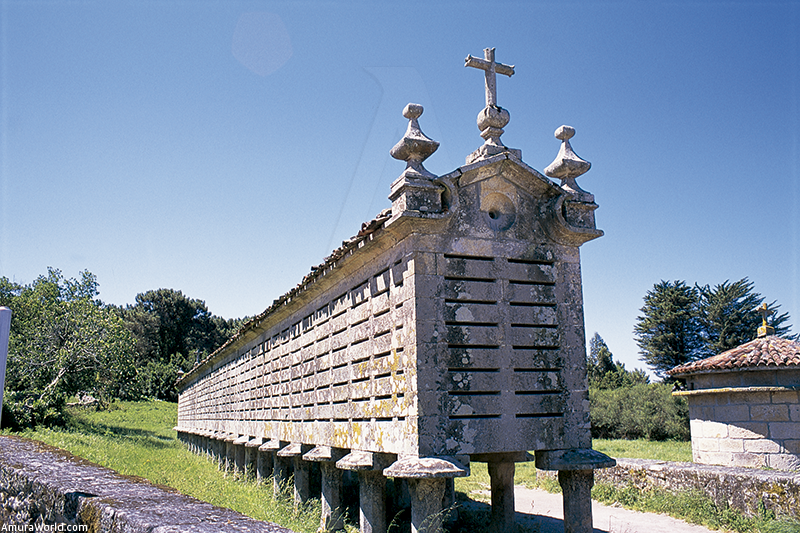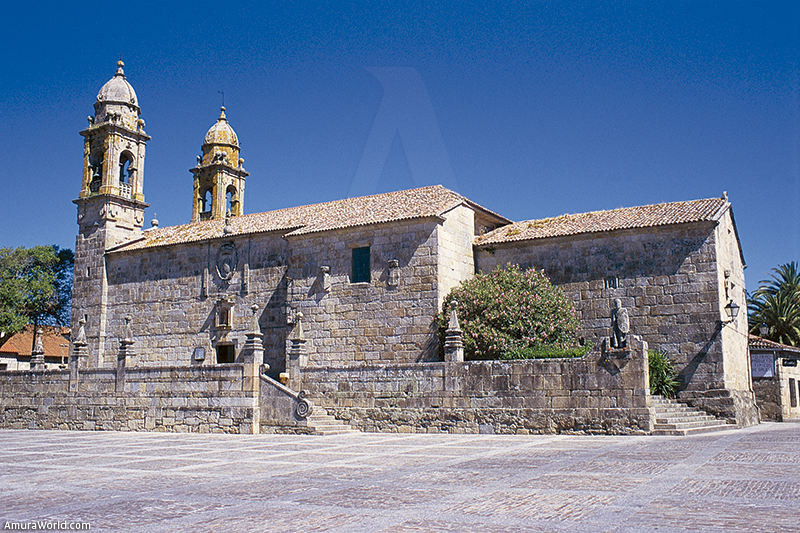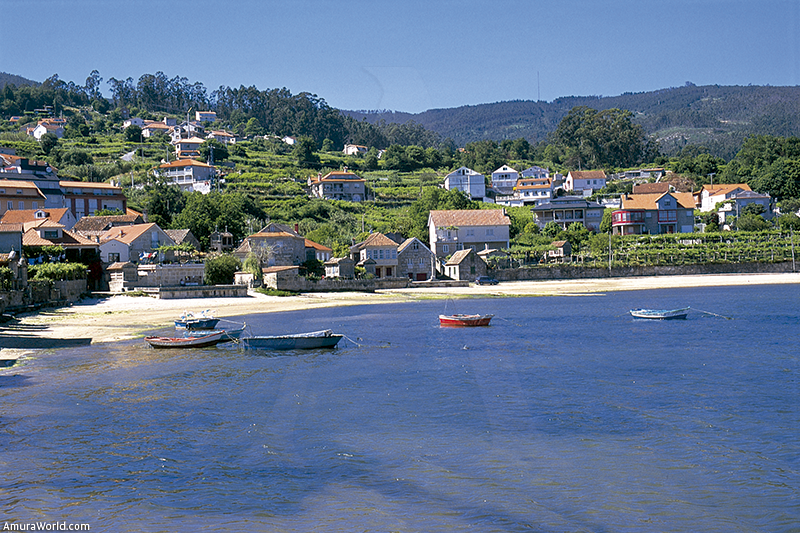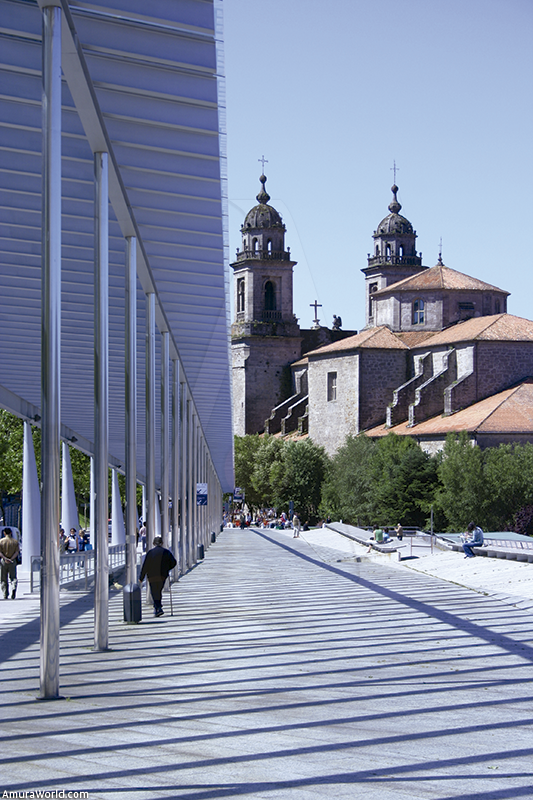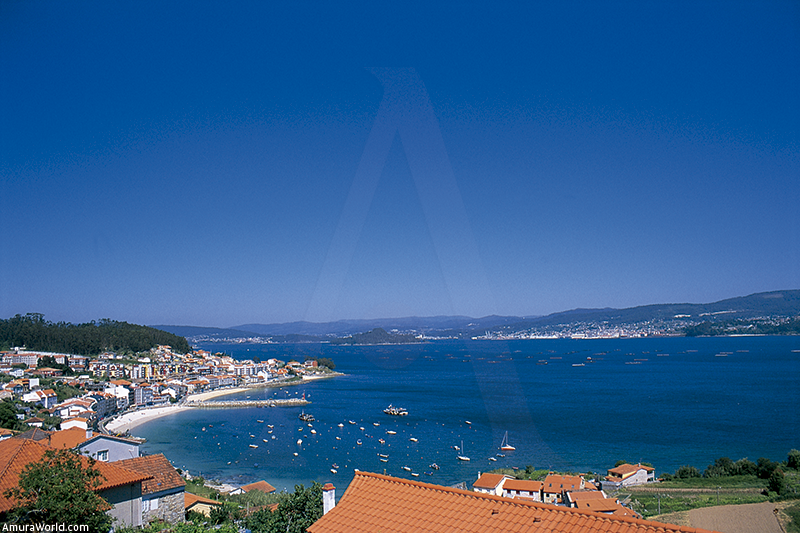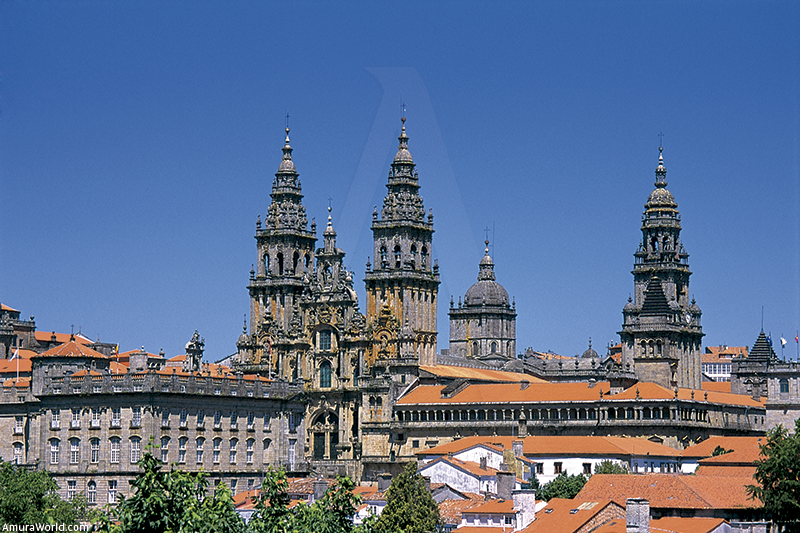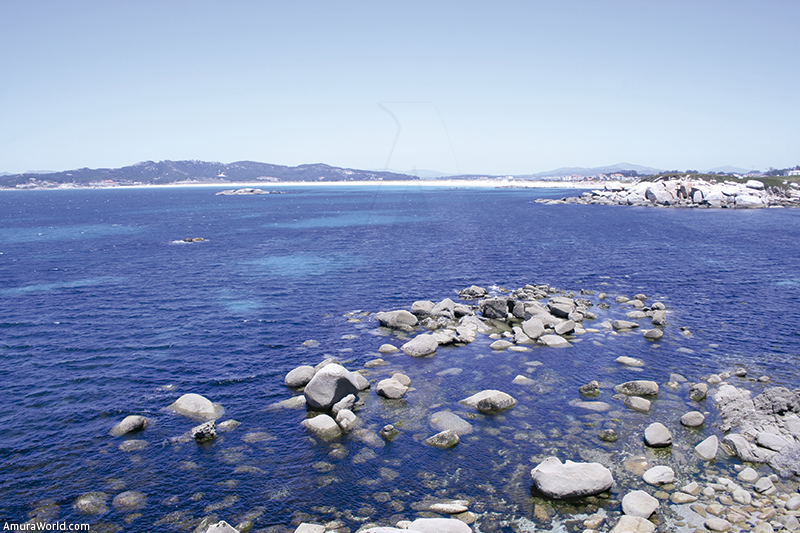From Ribadeo to Pontevedra
After sailing along the coast of Asturias and docking in Castropol, we crossed the easternmost estuary of the Galician territory, on the border with Asturias, and anchored in the Ribadeo marina before setting out to discover Galicia and its amazing, fabulous coast. Galicia is the mythical land of the Finis Terrae of the Romans, the land where every day the dying sun takes on an intense red hue when it sinks into the sea, on the Costa de la Muerte (The Dead Coast), where the forest of the Celtic druids was located.
Land of legends, of history, of privileged nature, sumptuous cliffs and mysterious estuaries, mountains and beautiful towns, perfect ports and the land of Santiago de Compostela at the end of a long, emblematic road. Galicia is discovered with affection and strongly seduces. It is a land of a thousand rivers, plains, merciful climate and adored by a great variety of plants and trees imported from distant horizons.
Rías Altas: From Ribadeo to A Coruña
The port of Porcillán, created by the Romans, is a pleasant marina in which to dock and set out to explore Ribadeo, which dominates the entrance of the deep estuary carved by the Eo River. It has mysterious streets, a modernistic Pazo (manor house) and a dignified atmosphere. After concluding a pleasant sail along the estuary it was delightful to enjoy the delicious bounty of the sea such as berberechos (cockles), clams, oysters, salmon, trout and eels from the Eo.
We left the next day with a fresh wind accompanied by violent gusts that came from the north. We visited As Cateadrais, one of the most beautiful extensions of sand where the stones form natural arches and create a magical scene. The tide was going down and did not uncover the arches however, the scene is dramatic, uneasy and very beautiful. In this zone, the small cliffs end in hills and embellish a docile coast. We passed the small, narrow Foz Estuary, with its stunning golden sand beaches and a plain that ends in the low cliffs, and we anchored in Foz to explore the ancient fortified Celtic settlement of Fazouro, which safeguards its stone ruins at the edge of the sea. In Sargadelos we found the factory of Galician blue and white ceramics, created by the Marquis of Sargadelos in the 18th century, together with the steel foundry.
The coast makes its way to the northwest. The wind was against us until we passed Cabo Burela and entered the Viveiro Estuary, the largest of the Galician Cantabric and into which the Landro River flows. Safely anchored in the Viveiro marina, we visited this town that preserves three doors in its medieval wall (the most notable is the Porta do Castelo with its white coats of arms), a number of noble mansions that surround the main plaza and the San Francisco convent.
We passed the O Barqueiro Estuary, created by the Sor River and where we discovered the enchanting towns of O Viñedo, O Barqueiro and the quaint white port of Bares. When we passed Estaca de Bares —the northernmost watchtower in Spain, the first wind farm and observatory of migrant birds— we encountered a violent wind that calmed down slightly once we entered the open estuary of Ortigueira, surrounded by imposing cliffs. Cariño is a charming fishing village lying at the end of a cliff that leads to Cabo Ortegal, where we found percebes (barnacle) harvesters sailing by. They were part of a superb scene that is appreciated all the more when seen from the Vixia de Herbeira viewpoint, an impressive natural hillock.
From this point on, the untamed cliffs came one after the other, the fierce lateral wind attacked us, the sea was very uneasy and the panorama was lavish. We could not touch land in San Andrés de Teixido, where the sanctuary, a place of Christian and pagan legends, is located. It is a spot that must be visited at least once in a lifetime because, if they do not so, pilgrims will do it once they are dead and in the shape of an animal. The wind was too strong and we were able to rest from the fury of the sea only after we passed the spectacular cliffs of Punta Candelaria. The beautiful Cedeira Estuary extends along two arms, the town of the same name makes a living from fishing and is renowned for its cuisine and its traditional architecture with white balconies. We had passed the Rías Altas with its rough seaboard and its cliff, that opens the way to the calm interior cliffs, where the O Curro da Capelada la Rapa das Bestas is celebrated the last Sunday of June, when the herd of semi-wild horses are branded and their manes trimmed.
The sea became calm and fabulous beaches softened the coast until we reached Cabo Prior, which protects the white sand beach of Doñinos and its coastal lake where, legend has it, there is an underwater city. This is when we came across the Artabro Gulf, limited by Cabo Prioriño to the north and A Coruña to the south, where the Ferrol, Betanzos, Ares and Coruña estuaries flow. The Ferrol Estuary shelters the town of Mugardos, with its colorful or white balconies near the beach, the A Palma and San Felipe castles; and the city of Ferrol, with its remarkable neoclassical town planning promoted by Charles III during the 18th century, and its commercial, fishing and sports port. The Ares and Betanzos estuaries protect several interesting towns of medieval origin. Betanzos, an ancient town of Celtic origin located at the end of the long Mandeo estuary, is outstanding.
Arcades and old balconies, amazing streets, fountains and the churches of Santa María de Azougue, built in the 12th century in a pure Gothic style, and San Francisco are an example of the charm of what was once one of the capitals of the ancient kingdom of Galicia. However, A Coruña is the city with the most personality and is situated on a peninsula at the entrance of the estuary. Legend says that King Gerión fought against Hercules and, when he defeated him, buried his head in this place and then built the tower which is, nowadays, the most ancient active lighthouse in the world, an important building in a city that lives surrounded by the sea.
Costa da Morte: From A Coruña to Fisterra
After a two-day stay in A Coruña and exploring the region, we set sail in the morning’s bright sun and with a slight breeze confronted the famous Costa da Morte. The shipwrecks and the coastal galernas, the fierce winds that blow in this region of Spain, serve as a reminder of the roughness of this coast that hides gorgeous estuaries and beaches and where the Atlantic invents winds that are worthy of the most frightening tempests.
Luck was with us that day and we elegantly sailed past Cabo de San Adrián and discovered a beautiful scene of steep hills and passed Punta Roncado, the extreme east coast of the Costa da Morte, which protects the entrance of the Corme Estuary and Laxe. Its rocks, savagely beaten by the sea, are the breeding ground of the best percebes (barnacles) and the white crosses on the rocks are a memorial to the brave fishermen who have died in such a risky business. In this estuary, Corme, with its secluded, steep streets, is located at the foot of the hill; the sand dunes of the A Insua inlet cover the foot of Monte Branco, creating a natural space of great ecological worth; and Laxe, an important fishing village, offers an excellent place to moor and set out to explore its typical streets, beautiful beaches, the Santa Rosa de Lima hermitage, Borneiro, the fortified town of A Cibdá and the Dombate dolmen.
Passing the Cabo da Insua do Laxe we followed the Traba beach until we reached the little Trece beach, surrounded by small cliffs and renowned for its British Cemetery, where those on The Serpent, which went down in these waters in 1890, were buried. Going around Cabo Vilán we entered the Camariñas Estuary, famed for its fishing as well as for the work done by the palilleras, women who make fine lace while sitting in the doorways of their homes on sunny days.
We docked in the small port of Muxia and visited the Nosa Señora da Barca Sanctuary, located in a rocky outcrop near the Punta da Barca lighthouse. We discovered the Pedra de Abalar, a huge slab of granite that, when rocked, produces a muted groan when, every second Sunday of September, pilgrims try, during a period of four days, to move it. It is believed that going underneath it cures kidney problems. The church of Santa María is a Romanesque jewel, the hórreos (stone granaries) of Merexos vie in beauty, the beaches are stunning and the Pazo de Cereixo manor house maintains its appearance of a medieval fortification.
Traversing the northwest part of the Fisterra Peninsula we sailed with a southeastern wind and calm sea along the length of a granite coast, passing Cabo de Bultra, the Morería beach, Cabo Touriñán, the westernmost point of the Iberian Peninsula, and the Lires Estuary. This is where we encountered the stormy cliffs that give shape to the peninsula and end in the Cabo Finisterre or Fisterra, or the Finis Terrae of the Romans, considered, during many centuries, the end of the world.
The Centolo de Fisterra islet was the cause of many shipwrecks but this day the sun, the slightly rocking waters and the calm wind allowed us to admire the sumptuous scenery before entering the Corcubión Estuary to dock in the Fisterra port, a small fishing village with typical architecture, a beautiful church, restaurants and the ambiance of a little town located at the end of the earth. The view from the lighthouse is impressive and is the place where all the pilgrims on the road to Santiago de Compostela end their journey, burning their old clothes and donning new garments.
Rías Baixas or Bajas, from Fisterra to Pontevedra
The next day was splendid, with the wind coming from the west. The sea dazzled like a blue diamond, the green coast was festooned with towns and the beaches adorned the scene at the foot of the cliffs. We explored the first of the Rías Bajas estuaries, discovering Corcubión, the most sheltered port and a place where there are dignified houses, a water mill that is set into motion by the tides and the Castelo do Príncipe, built by Charles III in Ameixenda. The town of O Pindo attracts thanks to its serenity and its small fishing port, sheltered in the very beautiful inlet of Ézaro, at the foot of the granite mountain peaks of A Moa (677 m/2,221 ft high). It is a stunning wild coast with extraordinary beaches and inlets that end at Dos Remedios and, in Carnota, we discovered the longest stone granary (35 m/115 ft), one of the largest in Galicia, which belongs to the church of Santa Columba.
Rounding by Punta Barreiro or de Louro, dominated by its lighthouse, we entered the calm, transparent waters of the Muros y Noia Estuary. Muros lives with its steep streets that surround the Pescadería Vella, a traditional place to purchase fish. The church of San Pedro, with its 12th century door, is outstanding as is the Vires do Camiño Sanctuary. Crebas Island, a town of multiple legends, waits at the entrance of the Bartolomé inlet at the end of which is the town of Noia. Streets full of charm, notable buildings and the Santa María A Nova Romanesque church are some of the interesting sights in Noia but the most fascinating is its Quintana dos Mortos cemetery, which shelters the tombstones of graves from the 10th century that are engraved with the coat of arms or guild marks of the deceased. Porto do Son, Baroña and Xuños are some of the attractive towns on the south bank of the estuary and the As Furnas beach, where, at high tide, the eroded rocks produce impressive sounds, is exceptional. The area is a paradise for birds since the play of the tides leaves a great expanse of wet sand uncovered.
Cabo Corrugado took us to Cabo Falcoeiro and the Sagres Archipelago and we sailed within the Arousa Estuary, in which the same tides play and change the scenery, ruling out sailing near the edge. The same estuary is where a great amount of cultivation of mussels, oysters and scallops takes place. On A Toxa Island, a prominent Spa, we docked in the exquisite town of O Grove and visited the church, whose walls are covered in scallop shells. Cambados is one of the most charming towns in Galicia and has important Pazos, scattered around its Fefiñáns Plaza and which are a indication of its importance, as well as the church of San Bieito. In its surroundings are the vineyards that produce the amazing Albariño wine.
Arousa Island was joined to the continent by a long bridge and guards its tide mill in Quilmas Point, while Vilanova de Arousa preserves fabulous stone granaries. Vilagarcía de Arousa, a small fishing village within the estuary, combines some superb Pozas with two outstanding fortified towers linked by battlements. Fishing activity does not permit sailing towards the Ulla River, where Catoria, with its medieval defensive towers, its Pontecesures Roman Bridge and Padrón, renowned for its delicious pimentos, is located. On the north bank, Rianxo’s colorful fishing fleet awaits as does the Virgen de Guadalupe Sanctuary; Araño is famous for its stone granary that is almost 37 m (121 ft) long; A Pobra do Caramiñal is characterized by its beautiful Pozas and the church of Santiago do Deán, which is from the 14th century and, finally, Santa Uxia de Ribeira has a dynamic coastal fishing port.
On reaching Pontevedra we visited this great city surrounded by the Lérez River, spanned by the ancient Santiago Bridge, which leads to the tomb of the apostle. The old part of town contains many attractive nooks and crannies such as the ruins of the Santo Domingo convent, the Santa María Basilica, the Santuario de la Peregrina, with its shell-shaped form; elegant palaces, plazas and fountains that caress the peace of this beautiful, elegant and snug noble city. The southern section of the estuary shelters, in Bueu, the scallop and mussel preserves industry as well as the beautiful beaches of Mogor, the Navy Academy and an important port in Marin, and Cabo Udra.
Our journey along the Galician coast had ended in the beautiful city of Pontevedra, the sailboat rested in Combarro and we were ready to discover Santiago. This sculpted coast is one of the most stunning in Europe. It is amazing, superb, mystical, filled with Celtic and Roman legends, amazing cliffs, cities, marvelous ports and beaches with crystalline waters and white sand. The weather was favorable but it is said that when the sky blends with the sea it produces fierce storms that leave no ship alive, attack the cliffs and destroy the beaches. Galicia, where the marvelous light filled with colors conquers all, is an amazing, gorgeous region filled with tradition and attractive natural wonders.
Text: Patrick Monney ± Photo: Patrick Monney.

